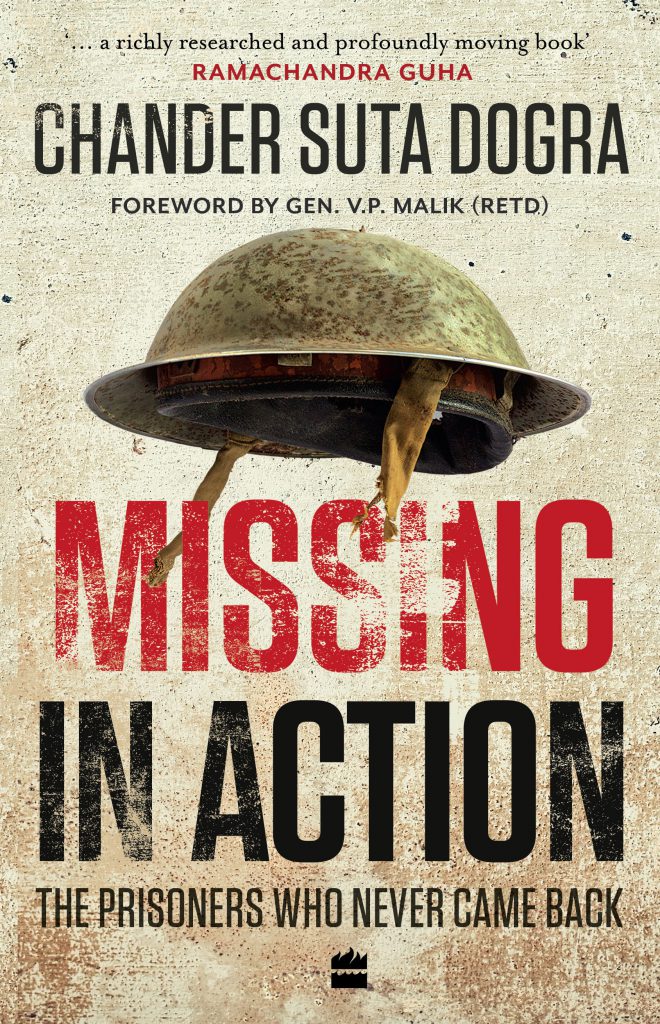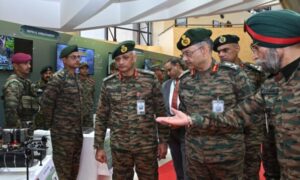‘… a richly researched and profoundly moving book.’
RAMACHANDRA GUHA
Missing in Action is a deeply researched work, with startling insights into the issue of India’s missing soldiers. It is a comprehensive book about a neglected aspect of our wars with Pakistan and how the world of prisoners of war and spies intersects.
A.S. DULAT, FORMER CHIEF OF R&AW
THE STORY OF THE INDIAN SOLDIERS who are missing in action is one that remains unfinished, a spill – over of the wars with Pakistan. These are men who disappeared in enemy territory while on daring missions during the 1965 and 1971 India–Pakistan wars. Officially, the number of soldiers missing in action stands at eighty-three, but many believe it could be a lot more. The nation has forgotten them, though successive governments continue to make token acknowledgements about their missing status.
Over the last five decades, there have been scattered news reports and a few memoirs offering information piecemeal, but this is the first comprehensive text that explores all aspects of the issue; the political, diplomatic and military . The result of years of research, Missing in Action offers startling revelations that make the issue live again. Amid much hearsay and dismissive commentary on the subject, Chander Suta Dogra’s book is an attempt to find an answer to the question, ‘What happened to these men?’ It also hopes to open up a debate on how soldiers are often used as pawns by governments, even as they pay lip-service to their cause.
Unacknowledged by Pakistan, the fate of missing Indian prisoners of war still remains a mystery. This book reflects the determination to never forget these brave men in uniform, while expressing admiration for the courage and fortitude of their family members.
G. PARTHASARATHY, DIPLOMAT AND AUTHOR

About the author:
CHANDER SUTA DOGRA is a senior journalist and author. Her first book, Manoj and Babli– A Hate Story (2013), explored the tough road to justice for victims of honour killings.
She has worked for Outlook, The Indian Express, The Hindu and Hindustan Timesamong other publications over the last twenty-five years. Nowadays, she writes for popular news portals like the Wire and Firstpost.
As the daughter, wife and mother of defence officers, she has lived most of her life in cantonment towns where the loss of soldiers in combat and the pain of their families and colleagues is an ever-present reality.
Chander Suta Dogra writes on a most sensitive subject and forces one to rethink the ethical aspects of war in the subcontinent. This is a very timely and conscience-shaking piece of work.
LT GEN. SYED ATA HASNAIN (RETD), FORMER GOC OF 15 CORPS
The book addresses questions such as:Why did India give up 93000 Pak prisoners of war without ascertaining whether all of its own soldiers were repatriated ?
Why did Pakistan hold back some Indian PoWs? The politics of a defeated nation and other constraints that dictated its decision.
Did India also hold back some Pakistani PoWs from those wars? New evidence that has surfaced in recent years indicates, that it did. But why did Pak not pursue the matter as vigorously as India did?
There are startling expose’ that bring out a secret proposal moved by India in the eighties to exchange Indian defence personnel in Pakistan with certain Pakistani prisoners in India. An account that reveals for the first time that Pakistan did admit to holding ‘security prisoners with names similar to some of the missing soldiers.’ The book alsoexplains how Pakistan got around the provisions of the Geneva Conventions according to which all prisoners of war should be returned after the end of hostilities.
One section in the book explores the possibility of Pakistani POWs in Indian jails. Eighteen names of Pak soldiers believed to be in Indian jails are given.
It also busts the myth of 54 missing defence personnel. With the help of war records from both Pakistan and India, it is clear that while some of the missing soldiers were or are indeed in Pakistan’s custody, the same cannot be said for all the names on the list. Many names are shown to be conclusively killed in action in the records of the Indian Air Force and Pakistani war records also affirm the same. The government also admitted to the Gujarathigh court that some of the names on the list are ‘confirmed dead’. Then why does it persist with a falsehood? Why is it prolonging the agony of the families who are living in uncertainty all these years?
The book also contains detailed accounts of two visits to Pakistan – in 1983 and 2007 – by some relatives of the missing men to search for their loved ones. How and why did these visits fail?
All adversary countries try to indoctrinate each other’s prisoners to make them work as spies against their home country. Missing in Action contains an account of ‘How Pakistan turned two Indian soldiers captured during Kargil war into spies and sent them to India. It is to the credit of Military Intelligence that the two men who were brought back from the brink and rehabilitated. (A detailed account).
Important case studies:
1. Maj Ashok Suri missing in the battle of Chhamb: Never-seen-before letters from a contact in Pakistan enabled Maj Suri’s father to convince the Indian government that the officer was not killed in action as his unit maintained, but was in Pak custody. The letters are reproduced for the first time. His detailed case study is the prologue of the book that brings out how the fog of war and inept officialdom served to assign a permanent question mark on the officer and twenty others, about whose presence in Pakistan he wrote in a secret letter sent from Karachi. Maj Suri’s two scribbled notes smuggled out from Pakistan and the letters from his father’s contact in Pakistan are reproduced in the book.
2. Flt Lt TS Dandoss crashed in Narowal: His case study put together by Indian Intelligence explains how they saw through Pakistan’s attempt to mix up information about two air crashes on consecutive days to quietly detain Dandoss. One pilot was repatriated, but the other (Dandoss) was held back.
3. Peace time disappearance of CaptSanjitBhattacharjeeis an account of how and why this officer and one jawan were captured by Pakistan from near the Rann of Kutch in 1997.
4. Wing Commander HS Gill crashed in Badin: For the first time, there is some evidence that Gill could have been loaned to the USA by Pakistan to help the Americans understand the dynamics of the MIG21 fighters which were giving them a tough time in Vietnam. Recent de-classified material shows that America had acquired a secret squadron of MIGs in the 70s and 80s and they needed an ace pilot to teach its own pilots the finer points about the Russian aircraft. WgCdr’s Gill’s flying mate Air Cmde Boparai’s interview sheds light on this possibility
5. Gunner Sujan Singh: He went missing during the 1965 Indo-Pak war and for about two decades was believed to be killed in action. In the early 1980s, two returning spies brought information that they had spent time with him in Pak jails. His name was added to the list of missing defence personnel twenty years after the war.
(A detailed case study explains how this happened)
(Page Extent: 388, Price: Rs 699)
[the_ad id=’22722′]


















